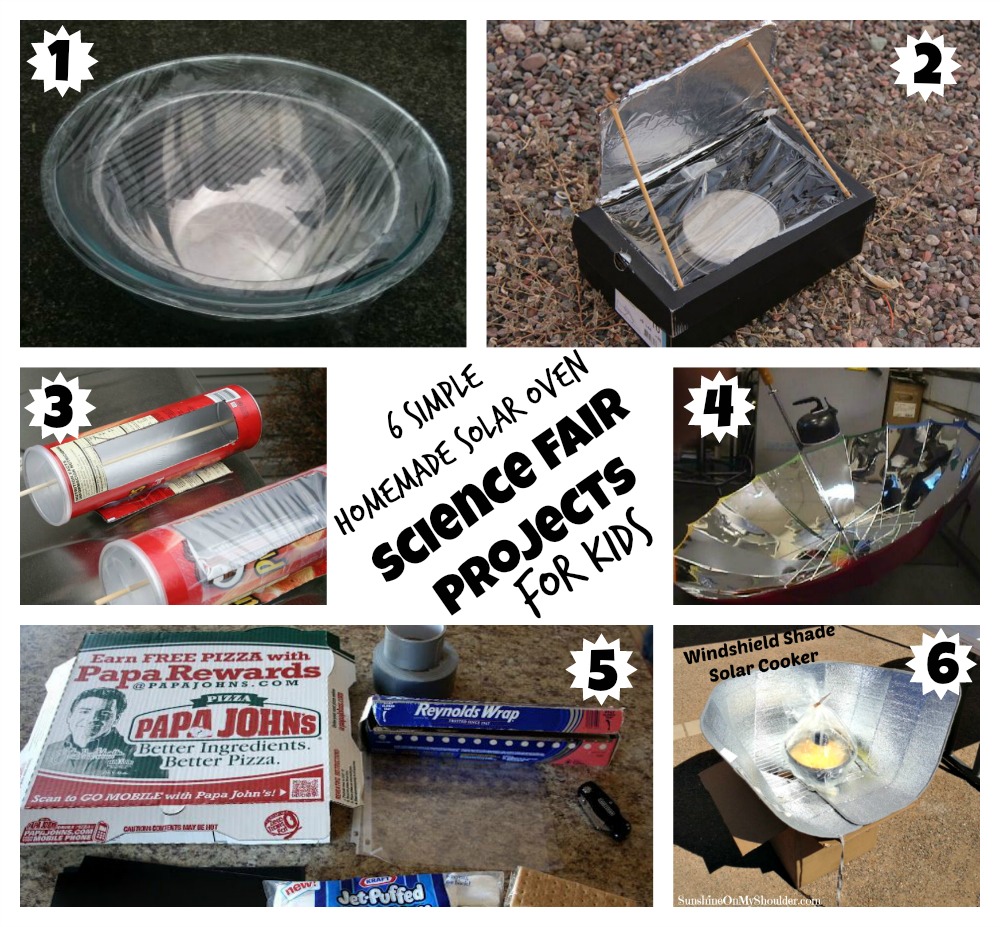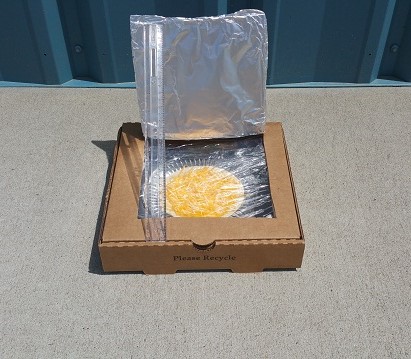Introduction: Harnessing the sun’s energy is not only environmentally friendly but can also be a great way to engage in a hands-on educational project. Building a solar oven is a fun science project that can teach kids and adults alike about renewable energy, sustainability, and basic scientific principles of heat transfer. In this blog post, we will walk you through the steps to create your very own solar oven using simple materials that are readily available. Let’s get started!

Credit: www.sunshineonmyshoulder.com
Materials Needed
| Material | Quantity | Notes |
|---|---|---|
| Cardboard box | 1 | Medium to Large Sized |
| Aluminum foil | 1 roll | Ensure it’s enough to cover the box interior |
| Clear plastic wrap | 1 roll | |
| Black construction paper | 1 sheet | |
| Non-toxic glue | 1 bottle | |
| Scissors | 1 pair | |
| Stick to prop the lid | 1 | A ruler or a chopstick works well |
| Thermometer | 1 | Optional, for measuring the temperature |
| Tape | 1 roll | Duct tape or packing tape |
Step-by-Step Instructions
- Prepare the Cardboard Box: Begin by selecting a medium to large cardboard box. The size of your box will determine the size of your solar oven, so choose accordingly. Make sure the box is clean and intact.
- Line the Box with Aluminum Foil: Cut pieces of aluminum foil to line the inside of your box. Use the glue to adhere the foil to all inner surfaces. The shiny side should face inwards to reflect sunlight. Be careful to smooth out any wrinkles or folds.
- Insulation: If you want to increase the efficiency of your solar oven, consider insulating the outside of the box with another layer of cardboard and include a layer of newspaper or straw between them for insulation.
- Create a Sun Window: On the lid of the box (or if using a pizza box, on the flap), cut a flap leaving at least a one-inch border around three sides and fold this back slightly to reveal the interior of the box when opened.
- Cover with Plastic Wrap: Now, take your clear plastic wrap and create an airtight window over the opening you just made. This will allow sunlight to enter while maintaining the heat you build up inside.
- Add Absorbing Surface: Inside your box, on the bottom, place your sheet of black construction paper. This will absorb the sun’s rays and convert them to heat.
- Seal It Up: Close your sun window lid and use the stick to prop it open at the best angle to catch the sun’s rays. Use tape to seal any air gaps that may have been created when you cut your flap. It’s crucial to maximize the heat retention.
- Testing Your Solar Oven: Place your solar oven outside in direct sunlight. For a real test, try cooking something simple like s’mores! Place the ingredients inside your oven and monitor how long it takes for them to melt. If you have a thermometer, you can measure the inside temperature at different intervals.
Understanding Your Solar Oven
The science behind your DIY solar oven is simple yet fascinating. It utilizes the greenhouse effect – the same principle by which heat is trapped in our planet’s atmosphere. The sun’s rays pass through the transparent window, heating up the air and the black surface inside the box, which absorbs the heat. The aluminum foil reflects the sun’s rays, concentrating more heat inside, and the seal you’ve created prevents the warm air from escaping. The hotter the inside of the oven gets, the better it will cook your food!
Frequently Asked Questions Of How To Make A Solar Oven Science Project
What Is A Solar Oven?
A solar oven uses sunlight as its source of energy to cook food or heat substances.
How Does A Solar Oven Work?
Solar ovens concentrate sunlight to a central point, where it heats materials inside an insulated container.
Which Materials Are Suitable For A Solar Oven?
Reflective materials like aluminum foil and glass are commonly used for making solar ovens efficient.
Can Kids Make Solar Ovens For Science Projects?
Yes, kids can create solar ovens using simple materials like cardboard boxes, foil, and plastic wrap.
Conclusion
Building a solar oven is an enjoyable and educational experience that demonstrates the potential of renewable energy in everyday applications. Not only does it provide a practical understanding of science and physics, but it also encourages creativity and problem-solving. Whether for a school project, a personal hobby, or simply a way to learn more about sustainable living, making a solar oven can be an exciting and rewarding venture.
Always remember to use your solar oven safely and never look directly at the sun when positioning your oven. Happy cooking with your homemade solar oven!
Tips and Tricks
- Use a larger box for greater internal temperature and to cook larger items.
- Enhance the reflection by adding extra flaps covered in foil around the sides.
- To increase cooking temperatures, add additional layers of plastic wrap, which can increase the greenhouse effect.
- Try different foods and cooking times to see what your solar oven does best!

